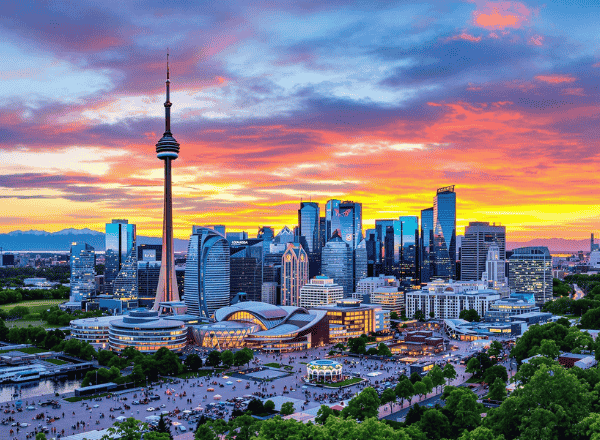
Canada is renowned for its breathtaking landscapes, multicultural cities, and high quality of life. But before you pack your bags or plan your next adventure, it’s crucial to understand the cost of living in Canada. Whether you’re a traveler, a new immigrant, or considering a move with friends, this comprehensive guide will break down the real expenses you can expect in 2025. We’ll compare major cities, highlight regional differences, and provide actionable tips to help you budget smartly.
Table of Contents
- Introduction: Why the Canadian cost of living Matters
- National Overview: Average Expenses Across Canada
- City-by-City Breakdown
- Cost of Living in Edmonton, Canada
- Cost of Living in Ontario, Canada
- Cost of Living in Ottawa, Canada
- Cost of Living in BC, Canada
1. Introduction: Why the Cost of Living in Canada Matters
The Canadian cost of living is a top concern for anyone planning to move, visit, or settle in this vast country. With its diverse provinces and cities, expenses can vary dramatically. Understanding these differences is essential for budgeting, job hunting, and making the most of your Canadian experience.
2. National Overview: Average Expenses Across Canada
Canada’s cost of living is higher in major cities. Living expenses can be lower in rural areas, transportation, food, and healthcare. According to Numbeo, the average monthly cost for a single person (excluding rent) is about CAD $1,200, while a family of four can expect to spend around CAD $4,300. Rent, however, is the biggest variable.
- Housing: Ranges from CAD $1,000 (small cities) to over CAD $2,500 (major urban centers) for a one-bedroom apartment.
- Groceries: Expect to spend CAD $300–$500 per person monthly.
- Transportation: Public transit passes average CAD $100–$150/month.
- Utilities & Internet: Around CAD $150–$250/month.
3. City-by-City Breakdown
Cost of Living in Edmonton, Canada
Edmonton, Alberta’s capital, is known for its affordability compared to other major cities. The cost of living in Edmonton, Canada is attractive for new immigrants and students.
- Rent: One-bedroom downtown: CAD $1,200; outside center: CAD $950.
- Utilities: CAD $180/month.
- Groceries: CAD $350/month.
- Transit: CAD $100/month.
Edmonton’s lower housing costs make it a popular choice for families and young professionals.
Cost of Living in Ontario, Canada
Ontario is Canada’s most populous province, with cities ranging from affordable to expensive. The cost of living in Ontario, Canada varies widely:
- Toronto: One-bedroom downtown: CAD $2,400; outside center: CAD $1,900.
- Ottawa: One-bedroom downtown: CAD $1,800; outside center: CAD $1,400.
- Smaller cities (e.g., London, Windsor): One-bedroom: CAD $1,200–$1,500.
Groceries and transportation are slightly higher in Toronto, but smaller cities offer significant savings.
Cost of Living in Ottawa, Canada
As the nation’s capital, the cost of living in Ottawa, Canada is moderate compared to Toronto or Vancouver.
- Rent: One-bedroom downtown: CAD $1,800; outside center: CAD $1,400.
- Utilities: CAD $200/month.
- Groceries: CAD $400/month.
- Transit: CAD $125/month.
Ottawa offers a balance of urban amenities and affordability, making it ideal for families and government workers.
Cost of Living in BC, Canada
British Columbia, especially Vancouver, is known for its high living costs. The cost of living in BC, Canada is among the highest in the country.
- Vancouver: One-bedroom downtown: CAD $2,600; outside center: CAD $2,100.
- Victoria: One-bedroom downtown: CAD $2,000; outside center: CAD $1,600.
- Utilities: CAD $200/month.
- Groceries: CAD $450/month.
- Transit: CAD $120/month.
Despite the high costs, BC’s natural beauty and mild climate attract many newcomers.
4. Key Factors Influencing the Cost of Living
Several factors impact the Canadian cost of living:
- Location: Urban centers are pricier than rural areas.
- Lifestyle: Dining out, entertainment, and travel can add up.
- Family Size: More people means higher expenses, but also potential savings (e.g., shared rent).
- Employment: Salaries vary by region and industry.
5. Tips for Managing Expenses
To make the most of your budget in Canada:
- Share Accommodation: Roommates can cut rent by 30–50%.
- Use Public Transit: Cheaper than owning a car, especially in big cities.
- Shop Smart: Buy groceries in bulk, use discount stores, and look for local markets.
- Leverage Newcomer Programs: Many cities offer settlement services and discounts for new immigrants.

6. Conclusion: Making Canada Affordable for You
The Canadian cost of living can seem daunting, but with careful planning and smart choices, it’s possible to enjoy a high quality of life. Whether you’re drawn to the affordability of Edmonton, the opportunities in Ontario, the charm of Ottawa, or the beauty of BC, understanding your expenses is the first step to a successful move.
Remember, the Canadian cost of living is not just about numbers—it’s about finding the right balance for your lifestyle, goals, and dreams. By staying informed and proactive, you can make Canada your new home without breaking the bank.
